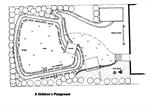Learn to better manage permaculture landscapes
 Advanced CPD Course.
Advanced CPD Course.
- Learn about buildings in permaculture design.
- Learn about waste disposal methods suitable for permaculture systems.
- Understand the role of recycling in modern society.
- Develop your knowledge of water irrigation techniques.
- Develop skills in the preparation of development and management plans.
- Study Permaculture IV as part of your studies towards a Permaculture Design Certificate.
COURSE STRUCTURE AND CONTENT
The Permaculture Design and Management course comprises 10 lessons.
COURSE AIMS
- Review the broad principles of sustainable landscaping and possibilities for incorporating ideas from permaculture into an existing or developing landscapes.
- Develop knowledge of a range of more sustainable materials that can be used for developing buildings or other structures in a landscape.
- Recommend ways to design and construct buildings that will complement the role of buildings in the permaculture environment.
- Recommend ways to establish waste disposal systems suitable for permaculture systems.
- Recommend systems for improved recycling in a sustainable community.
- Design landscapes that are more capable of coping with natural disasters.
- Develop better water management planning for a sustainable landscape.
- Understand the role of indigenous plants and animals in permaculture systems
- Prepare management and development plans for sustainable landscapes
- Undertake a major design project for a site to improve the sustainability and also the productivity of that landscape.
LESSON CONTENT
Lesson 1. Overview of Permaculture
- Introduction
- Key Elements
- Plants and Their Function in a Permaculture System
- Techniques Often Used in Permaculture
- Edges
- Guilds and Stacking
- Understanding Plant Names (Common Names, Scientific Names)
- Understanding Natural Regeneration (Concerns, Implementation)
- Advantages of Natural Revegetation
- Disadvantages of Natural Revegetation
- Natural Revegetation Relies on Succession
Lesson 2. Sustainable Building Materials
- Introduction
- Buildings
- Indoor/Outdoor Buildings
- Buildings for Storage
- Alternatives for Roofs and Walls
- Types of Materials
- Earth Building
- How to Make a Mud Brick
- Laying Mud Bricks
- Wall Finishes
- Building with Stone
Lesson 3. Integration of Buildings into the Environment
- Essential Elements for Houses in Different Zones (Temperate to Subtropical, Tropical, Desert)
- Conserving Energy
- House Modifications
- Alternative Energy
Lesson 4. Waste Disposal
- Liquid Waste (Greywater, Black Water)
- Waste Disposal and Recycling
- Natural Fertilisers (Types of Nitrogen)
- Factors Affecting Nitrogen Release from Organic Sources (Microorganism Population, Heat and Chemical Treatment, Soil Reaction, Soil Temperature, Concentration and Source of Organic Nitrogen, Moisture and Aeration)
Lesson 5. Recycling
- Composting
- Moisture Level
- Oxygen
- Temperature
- pH
- C/N Ratio
- What Can Go Wrong
- What Can Be Put in the Compost (Plant Material, Dead Animals or Birds, Manure, Garbage, Straw, Paper, Sawdust)
- Different Methods of Composting (Indore Method, The 14 Day Method, Sheet Composting, Compost Bins, In a Garbage Bag, Worm Digester Method, Trench Composting)
- The Finished Product
- Some Ideas for Using Recyclable Materials
- Waste Water Treatment (Sewage, Sewerage)
- The Classification and Composition of Wastewater (Sanitary Sewage, Industrial Waste, Storm Water)
- Recycling Waste Water
- Tastes and Odours
- Wastewater Treatment
- Water Sanitation Methods
- Reed-Beds
Lesson 6. Designing for Natural Disasters
- Introduction
- Fire, Flood, Cyclone, Tsunami
- Windbreaks
- Designing and Planting a Fire Break
- How to Arrange Plants
- Distances from Buildings
- Vehicular Access
- Maintenance
- Fire Resistant Plants
- Water Erosion
- Biological or Plant-Based Erosion Control
- Mechanical or Earthwork Erosion Control
- Gully Control
- After the Flood (Loss of Nutrients, Salinisation, Acidification, Soil Structural Decline, Contamination)
Lesson 7. Natural Watering
- The Water Efficient Garden
- Hoses
- Filtration
- Drip Irrigation
- Rainwater Collection
- Mosquitoes
- Water Saving Measures
- Household Water
- Excess Water
- Overcoming Problems with Boggy or Wet Areas (Improving Drainage, Planting with Water Loving Plants, Problems with Wet Gardens, Plants for Wet Areas)
Lesson 8. Indigenous Plants and Animals
- Introduction
- Wildlife Management
- Urban Settings
- Fencing
- Edge Effects
- Birds in a Permaculture System
- How Plants Benefit Birds
- Plants Which Attract Birds
- Bees in a Permaculture System (The Hive, Lids, Supers, Bases, Excluder, Frames and Foundations, Finishes)
- Plants Which Attract Bees (Ornamental Garden, Herb Garden, Fruit Garden, Vegetable Garden)
Lesson 9. Preparing Management and Development Plans
- Planning and Managing a Garden
- Copying Nature
- Plant Application (Trees, Shrubs)
- Starting a Permaculture Farm
- Permaculture Design
- Climate
- Structure of a Permaculture System (Plants, Soil, Drainage, Irrigation, Using Microclimate Modifiers)
- Drainage and Erosion
Lesson 10. Major Design Project
- Case Study - Living off the Grid
- Plants for Permaculture
Each lesson culminates in an assignment which is submitted to the school, marked by the school's tutors and returned to you with any relevant suggestions, comments, and if necessary, extra reading.
WHAT YOU WILL DO
- Go to nurseries and agricultural supply companies and inquire about environmentally safe pesticides. Write a report on these products.
- Explain the methods available to someone who wishes to control pests, diseases and weeds without using potentially dangerous
 chemicals.
chemicals.
- Observe the construction process of a building or structure that involves some type of earthworks (e.g. roads, dams, etc.).
- Briefly write a short report on mud brick dwellings. What are the benefits of this in of structure? What are the disadvantages?
- Take a photograph of your home or residence. Discuss your residence in relation to designing with consideration to the environment (e.g. does it efficiently utilise sun and shade, is it energy efficient).
- Describe the importance of house design in relation to location, e.g. tropical region of Queensland or west coast of Tasmania.
- Contact the local council or health department and inquire about allowable use of waste material in your area. Consider asking about grey water, septic tanks, use of effluent and animal wastes, etc. Write a report to 250 words on the task.
- Contact and obtain information on composting toilets from a manufacturer. Compile this information and use it as a personal reference.
- Contact the local council or health department and inquire about recycling methods available for residents of your shire. How has the council encouraged recycling?
- Find a home site (which has an existing home on it, or is planned to be built on), which is prone to natural disaster. This might, for instance, be in a flood or fire prone area; or perhaps a tropical climate that is prone to cyclonic storms.
- Consider what measures can be taken in the permaculture development of this property, to deal with the likelihood of a disaster at some future date.
- Contact a supplier of windmills and find out all that you can about the use of these devices for supplying water (i.e. pumping from a river, lake, dam, ground water etc.).
- Discover the alternatives available, the costs involved, the applications, operation etc.
- Contact the National Parks and Wildlife department and obtain as much information as possible on wildlife corridors, conservation, etc. Contact your local council department and inquire about their wildlife corridors, etc. Are they similar or drastically different?
- Can you think of a reason why there may be a difference?
- For a month period, write down all tasks performed by yourself and anyone who enters your permaculture garden. Submit this work schedule plus a brief report on how it may be possible to improve the time efficiency in the garden.
- Write a report on where you think ‘alternative’ permaculture is heading in terms of main-stream acceptance.
START AT ANY TIME
- Study Permaculture Design and Management to build on your existing knowledge of permaculture.
- Learn about designing and managing permaculture systems - embark on practical research and exercises to develop your skills and knowledge.
- You can start the course at any time - just go to the "It's easy to enrol" box at the top of this page.
If you have any questions or would like to know more, get in touch with our specialist Permauclture tutors today. They will be pleased to answer your questions and discuss your study aims.